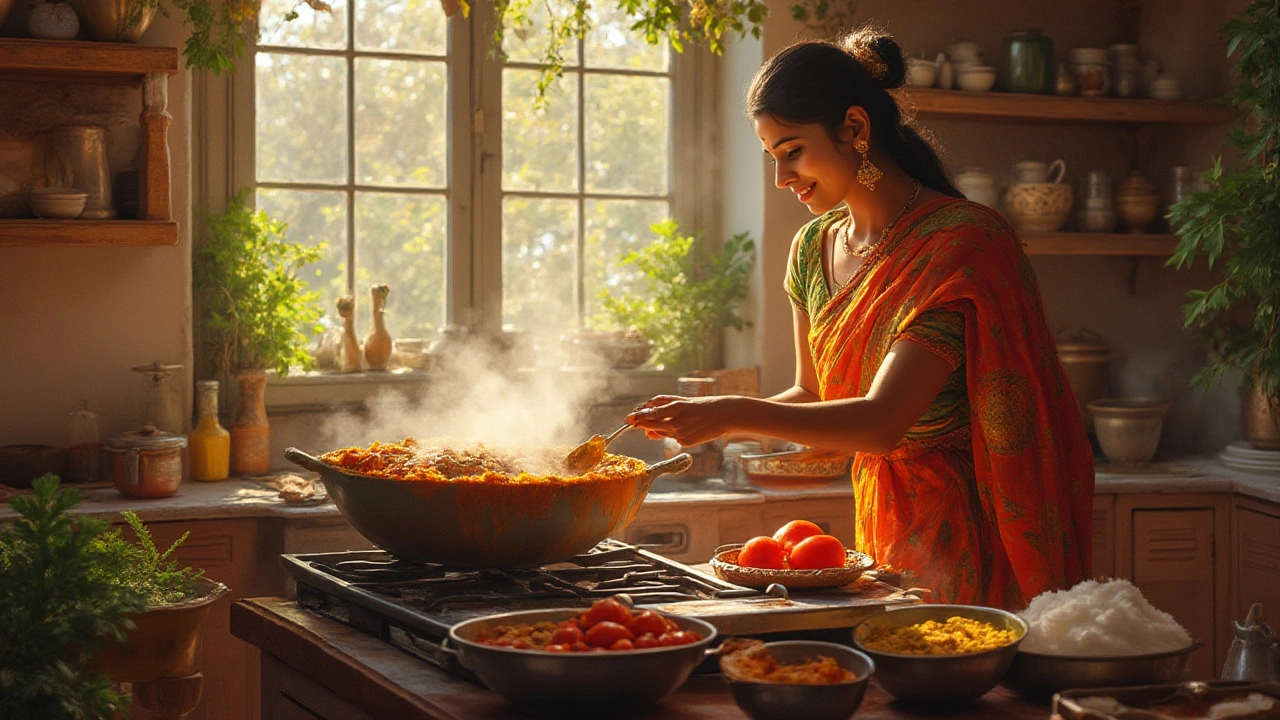Creamy Sauces in Indian Cooking
When working with creamy sauces, rich, velvety gravies that blend spices with a smooth liquid base. Also known as rich gravies, they add depth and body to countless Indian dishes.
A classic base starts with dairy – butter, cream, or yogurt – but many homes prefer coconut milk, a tropical, slightly sweet liquid that creates a silky texture without heaviness. The choice of base influences the sauce's flavor profile and mouthfeel, and it determines whether the dish leans toward a north‑Indian richness or a south‑Indian lightness. creamy sauces therefore require a liquid that can carry the spice blend without curdling.
One of the most beloved examples is butter chicken, a luscious tomato‑based gravy enriched with butter and cream. The sauce’s silky texture balances the smoky char of the chicken, while the spice mix of garam masala, cumin, and fenugreek adds warmth. This dish shows how a well‑crafted sauce can elevate protein, turning a simple grill into a restaurant‑quality experience.
Moving west, korma, a milder, yogurt‑laden curry often finished with ground nuts demonstrates the regional twist on creamy sauces. Here, the sauce is simmered gently, allowing aromatics like cardamom and cinnamon to infuse without breaking. The result is a fragrant, smooth coat that hugs vegetables or meat alike. Korma proves that gentle heat and patience are key ingredients in mastering a sauce.
Vegetarians get their own spotlight with paneer bathed in sauce. paneer, a fresh cheese that holds its shape in heat absorbs the surrounding gravy, turning each bite into a burst of flavor. Whether the paneer swims in a tomato‑cream blend or a coconut‑based sauce, the cheese’s mild taste lets the sauce shine while adding a satisfying protein boost.
Key Elements of a Perfect Creamy Sauce
To build a reliable sauce, start with a “tempering” step: heat oil or ghee, add whole spices (cumin seeds, bay leaves), then stir in ground spices. This awakens the essential oils and prevents them from burning later. Next, introduce the liquid base – dairy or coconut – and bring it to a gentle simmer. Finally, finish with a splash of cream, yogurt, or nut paste, and a pinch of sugar or honey to balance acidity. The process is simple, but each step creates a semantic triple: creamy sauces require proper tempering, need a smooth liquid base, and benefit from a final richness boost. Following these steps guarantees a glossy finish and prevents curdling.
Below you’ll find a curated set of articles that dive deeper into each of these ideas – from the science of why lemon curdles milk, to the secret ingredients that make biryani richer, and even how to store chutney for longer. Explore the collection to sharpen your sauce‑making skills, discover new variations, and bring restaurant‑level flavor to your home kitchen.

What Makes Curry So Creamy? Secrets to Creamy Indian-Style Curries
Ever wondered what makes a curry creamy? Dive into the secrets behind silky curries, key ingredients, practical tips, and tricks to create your own luscious dishes at home.